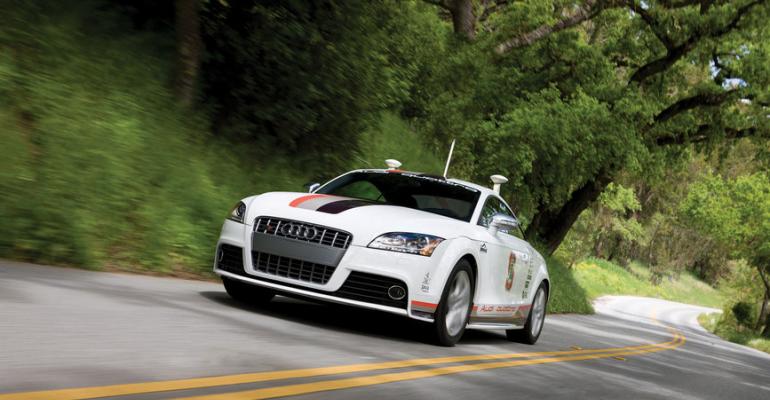Australia is not where everybody thinks it is and the experts who keep track of such things want to make sure autonomous cars don’t start running into each other, or other vehicles, as a result.
Geoscience Australia says it needs to act because this month the Geocentric Datum of Australia 1994 (GDA94) position for locations in Sydney is about 4.3 ft. (1.4 m) off from the global reference system used by global navigation satellite systems such as GPS.
It’s mostly due to the constant tectonic motion of the Australian continent moving largely north-northeast about 2.8 ins. (7 cm) a year and the clockwise rotation of the continent by about 0.6 degrees every 1 million years.
Geoscience Australia, which can pinpoint the continent’s exact position daily, says the location update, called the Geocentric Datum on Australia 2020 (GDA2020) will move Australia’s spatial information forward to its projected location on Jan. 1, 2020, to give the new locations a longer useful time of operation.GDA2020) will move Australia’s spatial information forward to its projected location on Jan. 1, 2020, to give the new locations a longer useful time of operation.
While a shift of 4.3 ft. in the past 22 years might not mean much to people using navigation devices to find the shortest way from Point A to Point B, it is a big deal in the auto industry.
Automakers including Tesla, Volvo, Mercedes-Benz and information-technology companies such as Google and Apple are developing autonomous and driverless vehicles, some of which already are used in agriculture and mining. They all rely on GPS navigation systems to get about.
The upcoming correction “will mean these types of future vehicles have the required level of accurate positioning, and so are not in the middle of the road or in the wrong lane,” a Geoscience Australia spokesman tells WardsAuto.
“The mere fact that car manufacturers have been using GPS navigation systems for over 15 years tells us that there is a need to ensure that the digital-map information is in the right place on the Earth.”
It is the fourth time since 1966 that Australia has undergone this process.
“Since the 1990s there has been an exponential growth in the use of digital-map information coupled with GPS devices,” the spokesman says. “So this time there is greater awareness of this position jump.
“We hope this will be the last time this shift in positon is done, as the new approach will be to slowly and continually move the position of digital map information so that there is no need for these shifts anymore.”
WardsAuto asked if the continental drift would reduce the costs of industry travel between Los Angeles and Australia. The Geoscience Australia scientists did their calculations.
“With Sydney moving north-northeast by 2.24 ins. (57 mm) a year and Los Angeles moving northwest by 1.54 in. (42 mm) a year, the convergence between SYD and LAX (airports) is only about 1.45 ins. (37 mm) a year,” a spokesman says.
“And, given the geodetic distance between SYD and LAX of 7,487 miles (12,050 km), the difference in travel distance equates to 0.000000003% which, with the current economy (airfare) of A$1,217 ($927), would equate to a discount of 36 billionths of a cent.”
Never hurts to ask.




